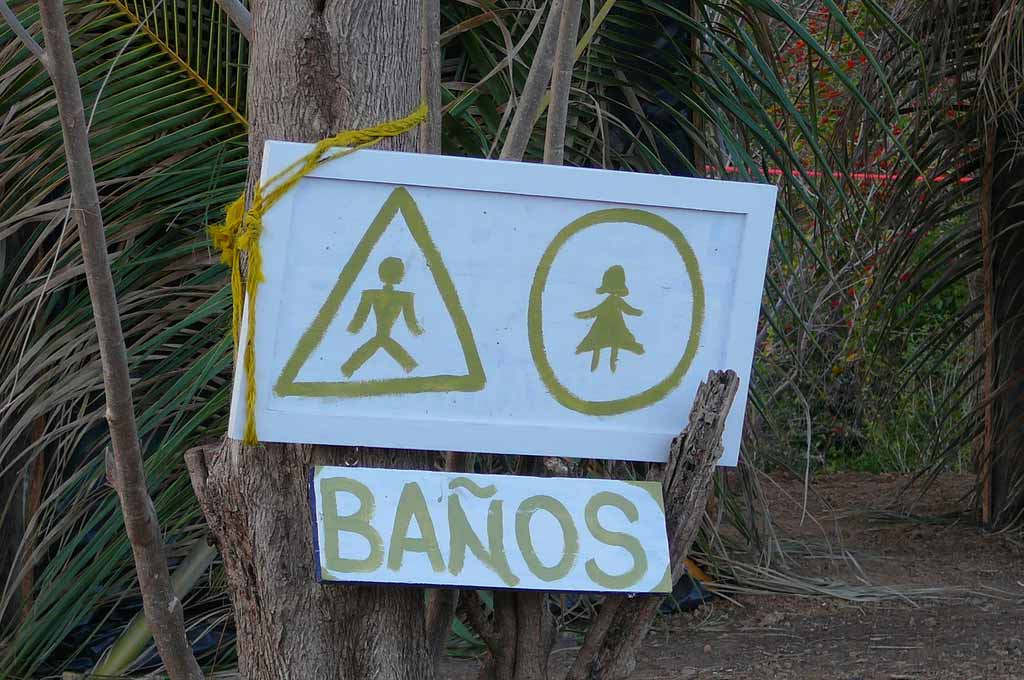Make your day-to-day a lot easier in Nicaragua–and anywhere else for that matter–by having a good handle on the absolute basic of all basics: toilet and shower facilities.

Restroom sign in Nicaragua. Photo © Tara Joyce, licensed Creative Commons usage.
Nicaragua boasts an enormous diversity of bathrooms, from various forms of the common inodoro (modern toilet, a.k.a. el trono) to the full range of dark, infested letrinas (outhouses). Despite so many options, many regions of Nicaragua suffer a shortage of actual toilet seats, so having to squat over a bare bowl is common. Because water supplies are sometimes sporadic, even in cities, you may have to employ a manual toilet flush. Mastering this move is important. (Leaving a toilet unflushed is considered very rude.) Use the plastic bucket sitting beside the toilet (or near the sink) and dump the water into the bowl, all at once, forcefully and from high up to ensure maximum swirlage.
Because water supplies are sometimes sporadic, even in cities, you may have to employ a manual toilet flush.In most mid-range and expensive hotels, you can probably safely flush your toilet paper, but the norm in Nicaragua is still to put used toilet paper in the waste basket next to the toilet so as not to clog the weak plumbing. It’s never a bad idea to travel with a roll of toilet paper (papel higiénico) protected in a plastic bag. Otherwise, try the following phrase with your host: “Fíjase que no hay papel en el baño” (“Look, there’s no toilet paper in the bathroom.”)In the cooler parts of the country, namely Matagalpa and Jinotega, some hotels and hospedajes offer hot water by means of electric water-heating canisters attached to the end of the showerhead. Cold water passing through the coils is warmed before falling through the spout. The seemingly obvious drawback to the system is the presence of electric wires in and around a wet environment. While not necessarily the electric death traps they appear to be, they should be approached with caution. Before you step into the shower, check for frayed or exposed wires. Set the control knob to II and carefully turn the water on. Once you’re wet and water is flowing through the apparatus, it’s in your best interest not to mess with the heater again.
To save you many cold showers trying to figure out how the darned thing works, I’ll let you in on the secret: If the water pressure is too low, the heater isn’t triggered on, and the water will not be heated, but if the water pressure is too high, it will be forced through the nozzle before it’s had sufficient contact with the coils, and the water will not be heated. Open the faucet to a moderate setting, and rub-a-dub-dub, you’re taking a hot shower. When you’ve finished, turn the water off first and dry off, then turn the little knob back to Off.
Excerpted from the Sixth Edition of Moon Nicaragua.